We Took a Maharaja’s 1930 Mercedes SS Cabriolet on a Road Rally. Here’s What Happened.

Supercharged Mercedes-Benz S, SS, and SSK models of the 1920s and 1930s sat atop the automotive food chain for ages, oozing exclusivity, glamour, and power for the Hollywood stars, industrialists, and heads of state who owned them. While the era’s similarly luxurious Packards, Rolls-Royces, and Duesenbergs imparted regality and refinement, the classic open-air machines from Mercedes are distinguished by a performance edge that proved their mettle at motorsports events like hill climbs and races. The sporting roots are no coincidence, as the power plant used in the models was designed by none other than Ferdinand Porsche before he started his own namesake company.
Hari Singh, the last ruling Maharaja of Kashmir, was a typically extravagant client of Mercedes-Benz’s top-line model, commissioning a long-wheelbase SS Sport in 1930 to match his yacht (as one does). Because Singh was reportedly “not much of a driver,” his SS Sport went relatively underutilized during its heyday and has retained about 95 percent of its originality, with only a few details—like leatherwork—having been updated during its nearly century-long life.
More from Robb Report
The New Mercedes-AMG CLE 53 Coupe Is as Powerful as It Is Menacing
The 23 Most Expensive Cars Ever Sold at Auction, From Ferraris to Jaguars
Car of the Week: One of the Most Coveted 1960s-Era Maserati Roadsters Is Heading to Auction
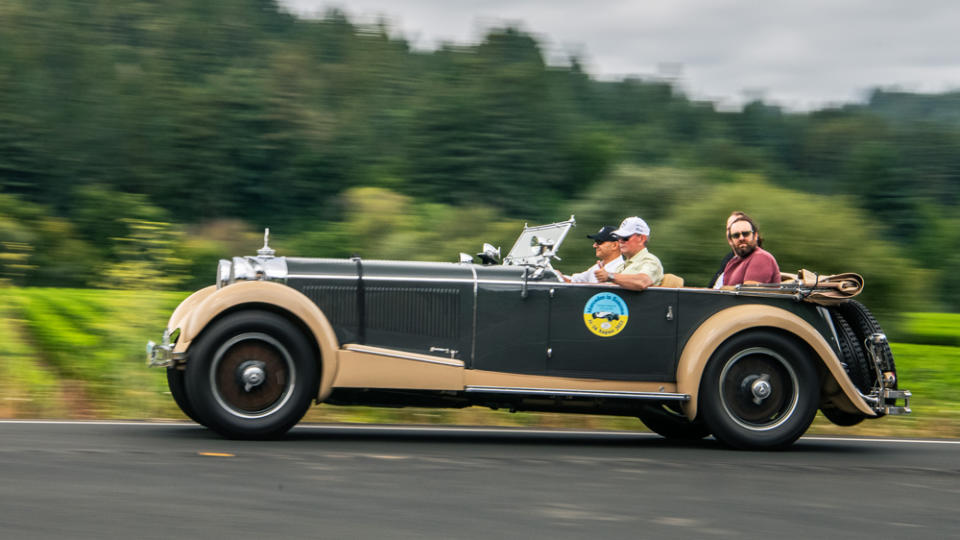
Now a part of the German marque’s museum collection in Stuttgart, the 1930 Mercedes-Benz SS Cabriolet was flown stateside recently, joined by 18 other classic cars from the automaker for a rally through Northern California’s Sonoma and Napa regions, the largest U.S. gathering of its kind in Mercedes history. Because driving any prewar vehicle—particularly a supercharged grand tourer from the 1930s—involves a steep learning curve, the Mercedes-Benz Classic team arranged early seat time so I could become acquainted with the SS’s quirks and peculiarities ahead of driving in the rally.
While hustling the SS through a massive parking lot near the Mercedes-Benz Classic Center’s million-square-foot facility, the grand old Benz proved that it’s built like nothing else on the planet— a distinction that’s both thrilling and terrifying for a multitude of reasons. For starters, most of the SS’s controls are switched around. The right-hand-drive configuration lands the four-speed manual shifter at my left hand—though having spent plenty of seat time on the “wrong” side of the road overseas made that a non-issue. The greater concern was that the gas and brake pedals are swapped, so the center pedal makes this multi-ton conveyance go, and the right pedal makes it stop.
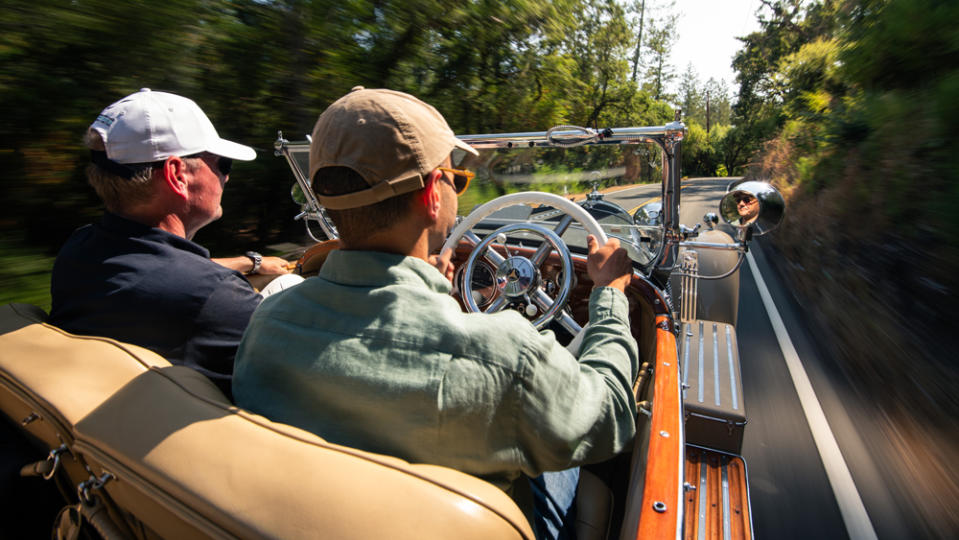
“I’ve seen three serious accidents because of this,” warned the Mercedes-Benz Classic’s master mechanic, in no uncertain terms. “The worst was an owner who had just restored his car and encouraged his banker to drive it,” he says. “When the banker mixed up the pedals, he drove straight into the owner’s house and knocked down a wall; on the other side was his dog, which was killed.”
Given the harbingers of potential disaster, I remind myself that this, like the panoply of vehicles I’ve tested over the past two decades, is just a car—only with a monumental 7.1-liter supercharged straight-six, backwards controls, and all the stopping power of a runaway train. Being hardwired with over three decades of driving, I soon find out that the natural born instinct to stop by stabbing the middle pedal has a way of emerging during the most unexpected moments. Adding to the challenge is the non-synchronized gearbox’s tendency to grind in a crashing collision of cogs despite the most deliberate attempts to double-clutch and match engine revs between shifts.
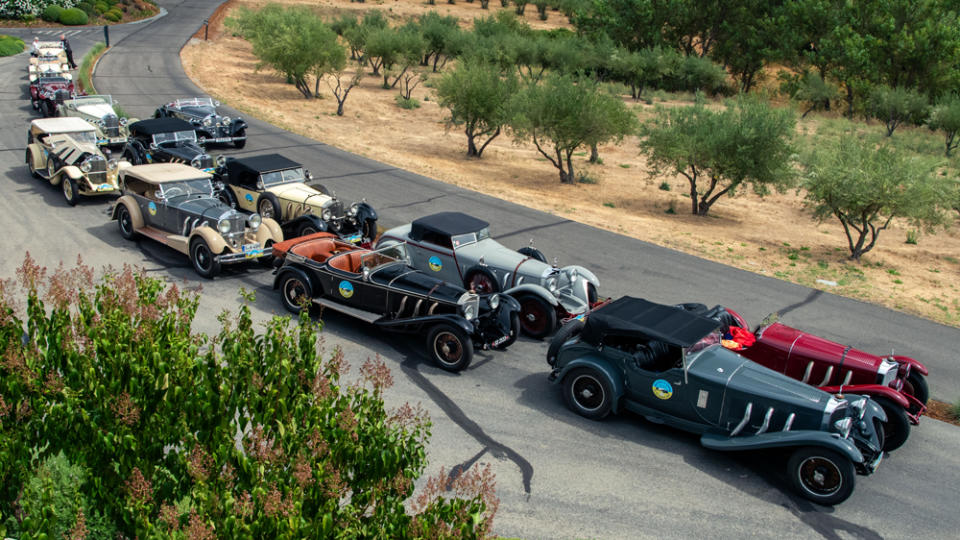
I’d have felt awful for the mechanical harm I seemed to be inflicting on this gorgeous specimen, but every other driver, from the car’s minder to legendary racer Jochen Mass, also tended to thrash the gears into place. Adding to the extremely visceral nature of the multisensory experience is a thick, round steering wheel that controls the front wheels without any power assistance, and brakes which require a degree of clairvoyance because they appear to have the stopping power of two wood blocks being pressed together by arthritic monkeys. “This,” I tell myself after an afternoon of gear grinding, “is going to be a lot of work.”
While getting acclimated to my grey-and-crème chariot before the big weekend, I asked Mercedes-Benz Heritage boss Marcus Breitschwerdt what he thought the Maharaja’s SS might be worth in today’s market. “I wouldn’t let it go for less than $25 million,” he states, adding that its history and originality distinguish it among the 111 examples which were built between 1928 and 1933. No pressure. Saddling up to the familiar-yet-daunting 1930 Maharaja Mercedes-Benz, Breitschwerdt and I soon head north for a few days with a group of collectors and their similarly remarkable prewar steeds.
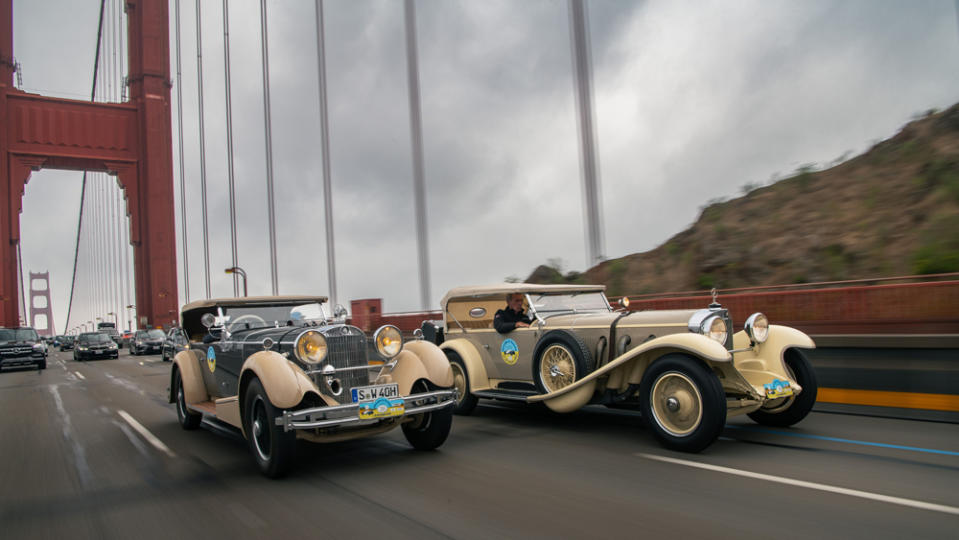
Breitschwerdt’s desire to drive first was a relief, as it offered me the opportunity to observe how he handles the SS in the real world. Stopping for coffee at the famed Alice’s Restaurant in Woodside after a drive through the dramatic, tree-lined Skyline Boulevard, I finally swap seats with him and brace for the area’s cool, damp microclimate.
In a public context against modern traffic, the SS feels even more magisterial than it did during my parking-lot trials. Within the white noise of workaday sedans and SUVs, the SS’s gleaming chrome and enormous proportions make the surrounding world look ordinary and banal. Breitschwerdt urges me to press the throttle to the floor (as if the car’s oversized appearance isn’t extroverted enough). When I bury the pedal hard, an agonized yet ecstatic scream emits from the engine bay. The sound has been nicknamed the “elephant,” for the trumpet-like blast of the supercharger engaging. Though not remotely quick by modern standards, the SS tugs forward with a confident insistence that gels perfectly with its imperious presence.
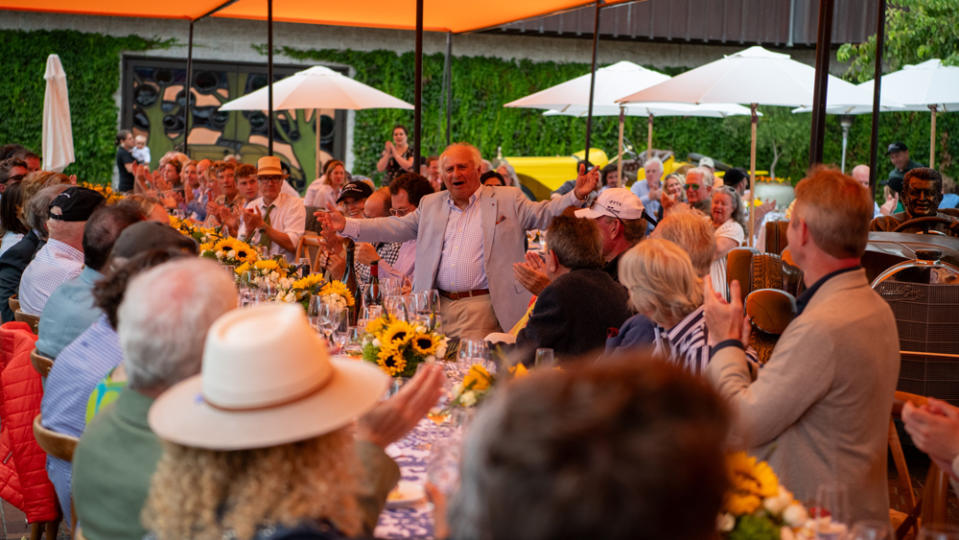
During my first day of driving, the instinct to stab the center pedal is strong, requiring relentless unlearning techniques to resist. Getting up to speed is also a challenge. Though this heavy roller’s momentum is undeniable, so is its compromised stopping power. As tempting as it may be to keep speeds up, the SS’s weak brakes make even a few extra miles-per-hour potentially disastrous. Instead, I temper my desire to pretend I’m leading the 1930 Rally Monte Carlo.
While driving the SS through slow moving traffic is a literal grind, hitting the right rural road uncovers an entirely different side of this ancient machine. On the undulating ribbons of asphalt along the region’s rolling hillsides, the SS finds its groove with a honeyed flow of torque, wind, and stately movement. As long as the tarmac doesn’t twist too hard, the Benz’s path remains controllable with a firm grasp of the wheel and a cautious command of the throttle.
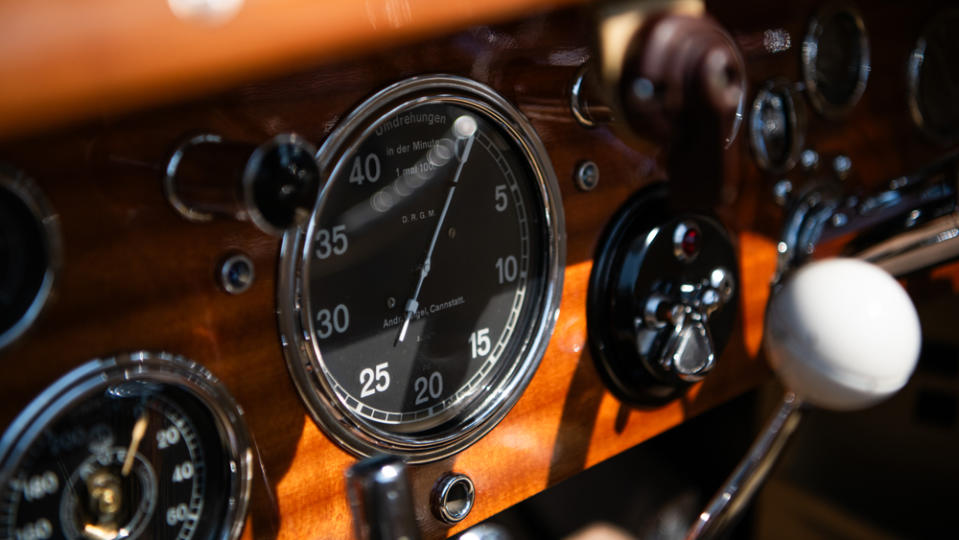
When kinking left and right through a gently bending stretch, the car is absolutely in its element, harkening to a lost era when status and lap times were hard-earned by a tiny slice of the most talented motoring personalities like Rudolf Caracciola and Hans Stuck. The feeling is singular—the heft, gravity, and intention of vehicles that were built at a time when the optimal engineering solution was to overbuild on the already ambitious goal of being the best car in the world.
Piloted alongside their contemporaries, these rare models have their charisma amplified. Rally participant Chip Connor counts a variety of significant classics in his collection, but only recently took the plunge into SSK ownership. “It was a bit of a baptism for me,” he told me after the drive, “but the car exceeded all my expectations. It’s like a long-distance runner; [Rolls-Royce] Phantom Is and IIs are great, but this thing is a thoroughbred.”
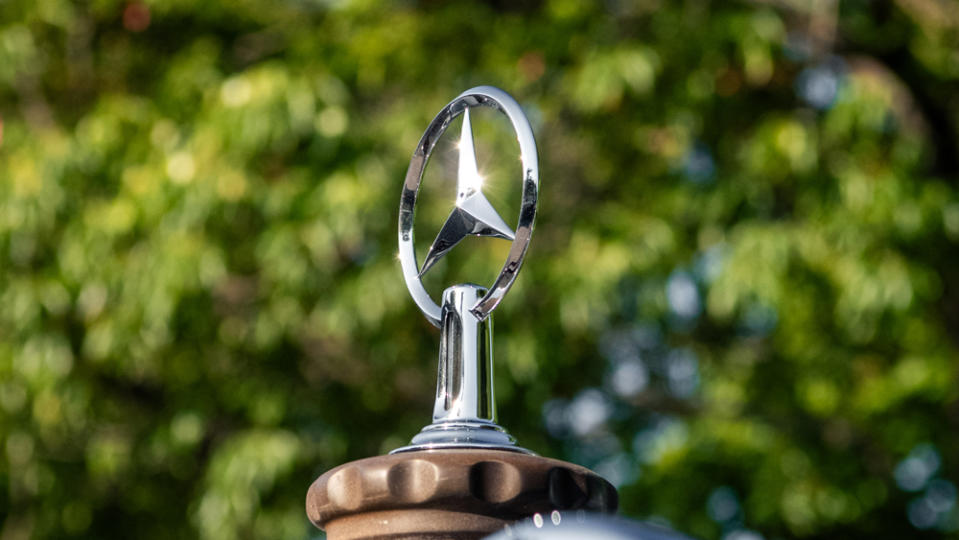
Revs Institute Vice President Scott George has also helmed a plethora of rare and significant vehicles at the world’s top driving events, but faces significant physical limitations when fitting into Revs’ SSK Barker, which he also campaigned in the 2010 Mille Miglia. “I wear a size 16 shoe, so I have to wear driving moccasins a size too small so I can fit my feet in,” he mentioned after the drive, saying that the heat of the transmission tunnel left him with light burns on his heel. However, he says the pain was offset by “. . . the view from the cockpit at the three-pointed star, catching the louvers on the bonnet. It’s an amazing sight that puts a smile on your face.” George adds, “You feel the boost coming on and you get that sound like nothing else. There’s nothing that sounds like full throttle in an SSK with that blower engaged; it makes it just that much more special.”
When Revs founder Miles Collier couldn’t make the rally, George assigned co-driving duty to friend and Revs board member Philip Richter. “When you drive it for four days and become attached to it emotionally, you hear the dual-stage supercharger howling, and go into a turn at real speed, it gives you this whole different concept because it’s almost 100 years old, yet it’s comfortable,” he says. As auction maven David Gooding remarked at the kickoff event, “Seeing them static is one thing, but to see them in motion is truly fantastic.”
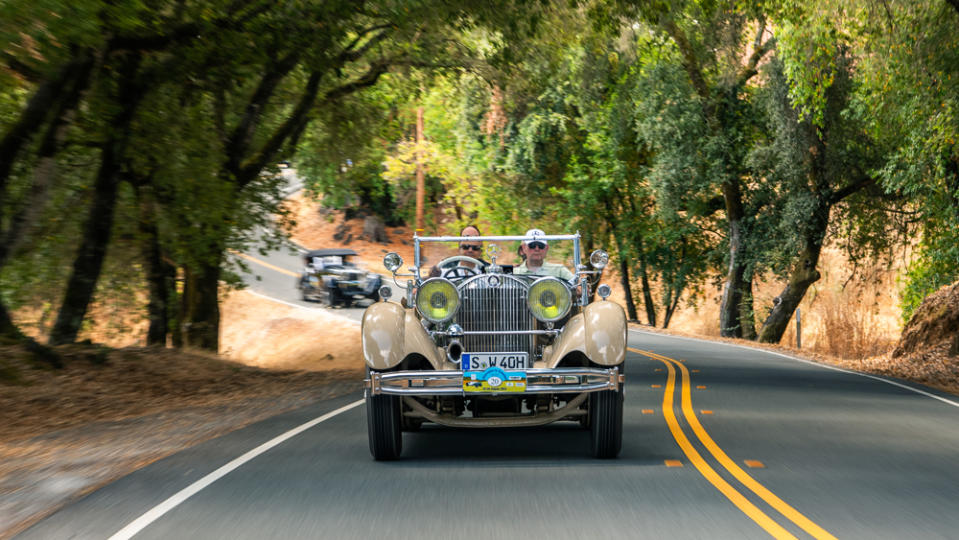
As fortunate as I was to spend days behind the wheel of a very special Mercedes-Benz SS Cabriolet, there was also a tremendous sense of relief when I returned it safely. In a world of chaos, mishaps, and risk, this time capsule has earned every touch of originality it has maintained over the years. I also felt the double-edged sword of reentering into the numbness of normalcy.
Driving back to Los Angeles in a modern car with Peter Becker from the Mercedes-Benz Museum was easy and effortless. We were able to hold whispered conversations at highway speeds with all the modern bells and whistles—massaging seats, surround sound, and safety features that were unimaginable a hundred years ago. Yet for all this dizzying technology and consolation of comfort, nothing could quite match the raw, heightened experience of driving a museum piece with plenty of story left to tell.
Best of Robb Report
Sign up for Robb Report's Newsletter. For the latest news, follow us on Facebook, Twitter, and Instagram.

